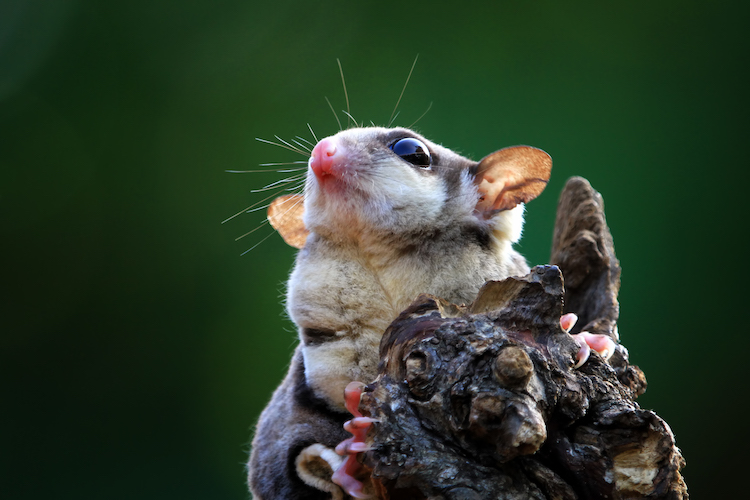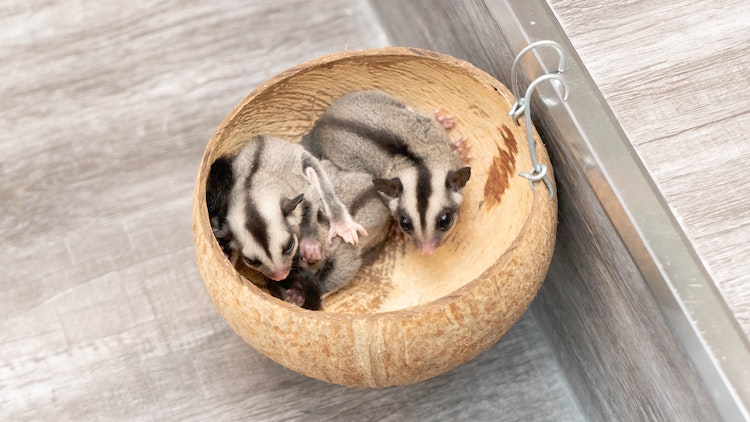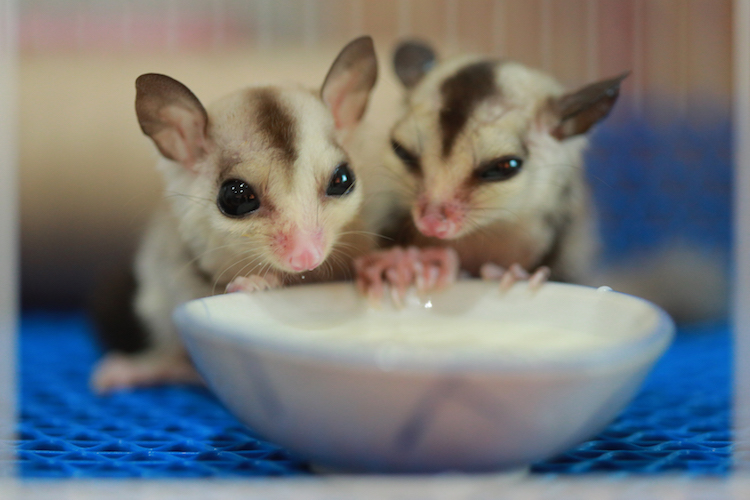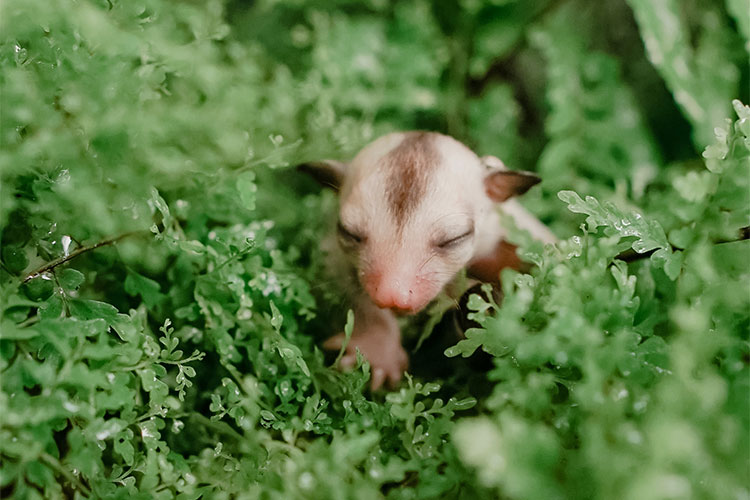Can a Pet Sugar Glider Live Alone?

The question of whether a pet sugar glider can live alone doesn’t have a straightforward answer. It primarily depends on the level of interaction and the personality of the specific pet sugar glider, as well as its comfort level when being with its owner.
When a pet sugar glider is being cared for, it will become heavily reliant on its owner for companionship. Since the owner is the sole source of interaction in its life, the pet sugar glider may not know any different. However, in some cases, having a companion or two can be beneficial for the pet sugar glider’s well-being, although this varies.
Determining whether to have one or multiple pet sugar gliders ultimately relies on the amount of time you can dedicate to their care.
Can Pet Sugar Gliders Live Alone?

In their natural habitat, sugar gliders form colonies consisting of at least 10 individuals, sharing a nest and engaging in tree-dwelling activities while facing constant threats from predators. The presence of companions in a large nest serves as a safety measure for these sugar gliders.
A pet sugar glider raised in isolation often misses out on crucial interactions with its own kind. While it is possible to keep a pet sugar glider alone, it requires continuous companionship and engagement with the pet sugar glider to meet their social needs and ensure their well-being.
Establishing a strong bond with your pet sugar glider from the beginning is vital. The process of bonding can take anywhere from a few days to a couple of months, during which you spend time handling your pet sugar glider for several hours to help them become accustomed to you and your scent. Additionally, providing an enriching environment is essential, as pet sugar gliders are nocturnal creatures and require an appropriate cage setup.
The key question to consider is whether you have the time and availability to replicate the social interactions that sugar gliders naturally have with their companions. Can you devote enough playtime and provide sufficient entertainment to keep them happy every day? Only you can answer this question, once you are aware of the challenges involved.
Managing a Pet Sugar Glider with a Busy Schedule
If you find yourself frequently away from home due to a demanding work schedule, there are solutions to ensure the well-being of your pet sugar glider. Many owners opt for a travel cage to accompany their pet sugar glider wherever they go, while some provide a travel pouch for them to rest during the day.
When you are away from home for extended periods, it’s important to monitor your pet sugar glider’s behaviour. Signs of unhappiness include a lack of appetite, reduced activity levels, and irregular bathroom habits. It’s crucial to be concerned if they exhibit a loss of appetite or decreased water intake, as these conditions can lead to serious health issues, even death. Keep in mind that once bonded with you, pet sugar gliders require a minimum of 2 hours of active physical interaction each day.
The Importance of Giving Attention to Pet Sugar Gliders

When you have developed a bond with your adorable pet sugar glider, they naturally seek your presence as much as possible. Consequently, leaving them alone for extended periods can lead to feelings of loneliness and anxiety. Even with a pet sugar glider companion, it is recommended not to leave your pet sugar glider unattended for more than a day.
Sugar gliders, being marsupials, crave warmth and the comforting feeling which reminds of their mother’s pouch. Carrying your pet sugar glider in a small pouch can help provide a sense of familiarity and security when you need to be away from home frequently.
As domesticated pets, pet sugar gliders rely on consistent and affectionate care since they are no longer capable of thriving in the wild. By providing them with continuous nurturing and attention, they can experience contentment and enjoy a long and healthy lifespan of up to 12 years.
How to Know if a Pet Sugar Glider is Happy?
Determining whether your pet sugar glider is happy can be observed through their behaviour and interactions with you. A happy pet sugar glider will readily jump onto your hands and seek your companionship, displaying a strong bond formed through quality bonding time. Their desire to be near you is a positive indication of their happiness.
Engagement in playful activities and exhibiting high energy levels are additional signs of a healthy and happy pet sugar glider. When they actively participate in games and display enthusiasm, it reinforces their overall well-being.
However, it is important to be aware of potential signs of sugar glider depression. If you notice a lack of appetite or a significant decrease in eating, it may indicate unhappiness or even depression. Additionally, observing saggy or loose skin could be a cause for concern. If these symptoms persist without improvement, it is advisable to consult a veterinarian for a thorough evaluation.
Can Pet Sugar Gliders Die from Loneliness?
Determining whether pet sugar gliders can die solely from loneliness is a complex matter as it depends on the level of neglect they experience. If pet sugar gliders do not receive sufficient attention and stimulation to keep them happy and engaged, they can become susceptible to depression.
Depression can have detrimental effects on pet sugar gliders, particularly in terms of their eating habits. When pet sugar gliders experience emotional distress, they may not consume an adequate amount of food, which can lead to serious health complications and even death. While pet sugar gliders do not directly die from loneliness, the associated symptoms of depression, such as reduced food and water intake, can be detrimental to their well-being. Given their small size, even a relatively small degree of neglect can have significant repercussions.
It is essential to prioritise the emotional and social needs of pet sugar gliders to ensure their overall health and longevity. Providing regular attention, interaction, and a stimulating environment are crucial in preventing pet sugar glider loneliness-related issues.
Conclusion
If you choose to raise a pet sugar glider, it is crucial to understand that they will have a strong desire to be in close proximity to you. When pet sugar gliders are not sleeping in your hand, they will seek comfort inside a sleeping pouch, emerging in the evening hours when it is time to wake up.
This arrangement is perfect if you have a long or swing shift, as your pet sugar glider will find comfort in your presence until you return home and place them back in their cage. Maintaining this daily routine and ensuring their continuous exposure to you will ensure your pet sugar glider’s wellbeing and and remain happy.
Download the JoJo Pets app today for exclusive news and offers at https://jojo-pets.com/
